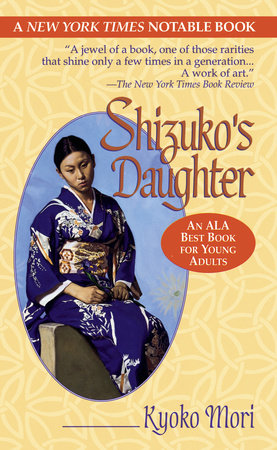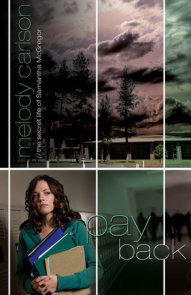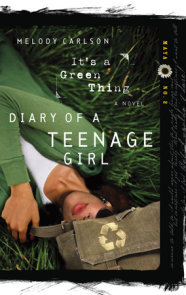TEACHING GUIDE
ABOUT THIS BOOK
INTRODUCTION/PLOT SUMMARY
When bold and brilliant twelve-year-old Yuki Okudo suffers the loss of her mother by suicide, she is doubly bereft. For Shizuko is a loving mother with unrealized artistic gifts who has bestowed a world of beauty on her daughter. Deprived by custom of her mother’s family and the sustaining heritage it might provide, Yuki’s ability to survive such devastating loss is sorely tested by an indifferent father and his resentful new wife. Fortunately, like one of the flowers that form the story’s central motif, Yuki has been planted in soil that is rich enough to nurture her through the hard cold season that lies ahead. Shizuko’s Daughter, is a deeply moving and powerful coming-of-age novel.
Like many children with emotionally fragile parents, Yuki grows up strong and capable, and Shizuko has encouraged her daughter to be bold. Yuki fights boys and studies piano, is an outstanding student and organizes the household when her mother’s energy flags.
"You are a strong person," Shizuko writes in her suicide note, "You will no doubt get over this and be a brilliant woman. Don’t let me stop or delay you."
But once Shizuko is gone there is much to threaten Yuki’s development. She must endure the systematic assault on her mothers memory. First by her well-intended Aunt Aya simply removing the possessions of the dead, and later by the vengeful Hanae. On the day of the funeral, having watched her mother’s beautiful clothing packed away, Yuki takes refuge in her own closet filled with colorful clothing all made for her by Shizuko. There, with the sounds of mourning drifting upstairs, Yuki covers her ears and breathes in the colors seeking to "drown out the wailing chant with their brilliance." It is not the last time the beautiful things Shizuko has provide will give her comfort.
Next, Yuki faces her father’s attempt to erase his former wife by marrying the woman who has been his mistress for eight years. Though Yuki does not know the facts, she understands the betrayal. Shizkuo, however, has raised her to be blunt–never to be afraid to turn from what is true.
On Hideki and Hanae’s wedding day Yuki will not pretend with Hanae and runs from her. Yuki disrupts the ceremony by smashing the ceremonial sake bowl on a tabletop, carrying a photograph of Shizuko and Hideki taken on their wedding day in the white beaded purse her mother had long ago made. These actions are not simply the excesses of a hurt child, they are indicative of Yuki’s intolerance of hypocrisy, a quality that will enable her to thrive under conditions that might destroy less hardy souls.
After the wedding, Aunt Aya explains, Yuki will only see her mother’s family on special occasions, for that is custom. But Yuki sees beneath custom to the truth. She knows her father and Hanae do not really love her and are only concerned about what others will think if they do not take her. Once together in the Kobe house, they scarcely notice her, leaving Yuki to wander around with her memories. It is these memories that now offer Yuki the sustenance she needs to survive the cold. Hanae cannot tamper with Yuki’s memories, which are as strong as her intolerance for hypocrisy.
When she looks out at the garden Shizuko planted Yuki sees it is unchange–filled with irises, columbines, chrysanthemums, and violas„all rich with memories of her mother’s tending. The legacy Shizuko has passed on to Yuki is both visible and invisible, in the garden and in memory. Both imbue her experience of everyday life with richness. "There wasn’t much, Yuki knew, that she hadn’t been taught by her mother."
Despite her anguish, Yuki continues as the brilliant and accomplished child she was before her mother’s suicide: president of her class, track star, outstanding student, and all this in the face of the increasing hostility of Hanae and the neglect of her father. Within two years, Yuki is already able to acknowledge, if only to herself, that her mother died because she was unhappy, And that she herself wants to "work hard and be happy for her" as she promised. At fourteen, Yuki realizes her own strength and does nothing to dampen it.
It is not until after the three year anniversary marking her mother’s death that Yuki is able to reveal the turmoil she has held within. At first she can express only anger. Refusing to perform the rituals of ancestor respect at her grandmother’s Buddist altar, Yuki exclaims, "How can I respect someone who was cowardly enough to kill herself?" With her grandfather’s collapse Yuki’s tight reserve breaks down, and she reveals the complex emotions that have burdened her: grief at being unable to help her mother out of her unhappiness, sorrow, loss, guilt, and anger, "I get mad at everything and everyone, even you. I don’t know what for."
Once she has unburdened herself, Yuki is able to accept her grandparent’s love. She and her grandmother mourn together the loss of Shizuko that neither of them completely understands. She has re-connected with the family whose values will now sustain and nurture her. Yet Yuki’s cold hard season is far from over. She must return to Kobe where her achievements in the world go uncle brated and she must deal with the escalating conflict with her increasingly unbalanced stepmother. Frustrated over her childlessness, regretful of the years when, as Hideki’s mistress, she might have borne a child, Hanae uses Yuki as a scapegoat. She searches Yuki’s room, testing the locked desk drawers, calls her secretive and unruly, criticizes the bright clothing Yuki has bought for herself from money earned. Finally she gathers up all the clothes of Yuki’s childhood and prepares to throw them out. Yuki cries and reaches to take them back, "You pretend that we’re all happy together. I don’t pretend. I hate you," she exclaims. Hanae responds by giving Yuki a hard push that nearly sends her tumbling down the stairs. Later she blames Yuki for having attacked her and denies having done anything wrong.
Afraid that without the clothes she will lose her memories of her mother, Yuki begins "to make colored pencil drawings of the clothes her mother had sewn and embroidered for her," keeping them in a sketchbook in a locked drawer of her desk. Though she scorns the cooking and sewing class she must take at school, Yuki uses her art to hold onto the things her mother made, the material things that do not endure.
Her mother’s legacy firmly within, Yuki chooses to leave her father’s house, support herself, and study art at the college in Nagasaki. Her father feels only "a surge of relief" at her going and "immediately thereafter, a sense of annoyance and guilt." He sends to Yuki, without a note, the sketches he finds of his former wife’s drawings, a wordless gift from a man who is so cut off from his own feelings that he has no idea how to love.
In the end, Yuki learns to value the whole complex fabric of life with its failures and disappointments, its blooming and its dying back, and she comes to recognize the importance of the past. Returning to her grandparents, Yuki has a profound sense that she and her mother were coming home. Now she too can worship at her grandmother’s altar, but in her own way, placing an offering of fabric she has dyed herself in the colors of blue and green, her mother’s colors.
Strong and brilliant and bold, Yuki has become the woman Shizuko hoped she would be.
ABOUT THIS AUTHOR
ABOUT THE AUTHOR
Kyoko Mori was born and raised in Japan but now lives in De Pere, Wisconsin, where she is an associate professor of English and Creative Writing at Saint Norbert College. She has published her poetry and short stories in leading literary magazines such as The Kenyon Review, The Apalachee Quarterly and The Beloit Poetry Journal.
DISCUSSION AND WRITING
QUESTIONS FOR DISCUSSION
1. Mori gives us Shizuko’s thoughts, feelings, and actions on the last day of her life. What kind of a person does she appear to be?
2. After her mother’s death why does Aunt Aya compliment Yuki for beings so good and brave? How is Yuki really feeling after her mother’s death? How do we know this?
3. Why does Yuki shatter the ceremonial sake bowl at her father’s wedding? What other "outrageous" actions does she take that day? What does this show us about her character?
4. What are the words Yuki has spoken to her mother that she wishes she could take back? Why did she say them? What effect does she think they have had?
5. How do the irises of chapter four and the azaleas of chapter five help us to understand what Yuki is feeling inside? In what way is Yuki like these flowers?
6. "You are simply too much," Shizuko had said to her daughter affectionately. In what ways is this true? What are the benefits of Yuki’s excesses. What are the drawbacks?
7. Why doesn’t Yuki tell Sachiko and her mother the truth about Shizuko’s death? What effect does this have on Yuki?
8. What is the ritual that Masa performs at her household altar? Why does Yuki refuse to do it? How does her grandfather’s collapse help Yuki to become close to her grandparents? What do they all share?
9. Why does Hanae throw out Yuki’s childhood clothing? What effect does this have on Yuki? Do you think Yuki provoked Hanae into attacking her or only spoke what was true?
10. How do Yuki’s sketchbook drawings help her to hold onto the past? In what way is her drawing an act of survival?
11. What does Shizuko’s rescue of the golden carp show us about her character? In what ways was she similar to Yuki as a child?
12. What important lessons about love does Yuki learn from Mr. Kimura? In what ways is he different from her father, Hideki? Why does Yuki have a hard time accepting the idea that she loves Isamu?
13. How does Mori show us that Yuki has actually "come home" when she visits her grandparents? What important lessons does she learn from their lives? Why are they such excellent teachers?
14. How does Yuki’s creativity and independence affect the choices she makes after high school?
15. What are the reasons Hanae and Hideki are so cold and loveless. Are they simply evil characters, or does Mori give us an understanding of what has caused them to be this way? What qualities have enabled Yuki to survive living with them and not be crushed?
16. How does the epilogue point out the theme of the novel: that life must be valued. Why does Mori use tree frogs and cicadas to show this?
17. Compare and contrast the characters of Yuki and Shizuko. What qualities do they share? In what ways are the different?
18. Compare and contrast Masa and Takeo with Hideki and Hanae. In what ways are they similar, in what ways different?
JOURNAL TOPICS
One of the most effective techniques for helping adolescents engage with a book is to have them write about their own related experiences before reading about a character’s.
Here are ten topics keyed to each of various chapters of Shizuko’s Daughter that will allow them to do this.
Chapter One (Shizuko’s suicide)Write about a time when an adult in your life did something he or she believed would be for your good that ended up hurting you instead.
Chapter Three (Yuki breaks the punch bowl) Write about the most outrageous action you took as a child, one you performed for reasons that were completely misunderstood by the adults around you.
Chapter Four (Yuki tells her mother she would be able to go on if she should die.)Write about a timewhen you said something to someone else that you regretted for a long time afterward. OR (Moving day for Yuki and Shizuko Write about the day you moved from a place you loved„what you took and what you could not take. What one thing did you find hardest to leave? Describe it in loving detail.
Chapter Five (Yuki meets Sachiko)Write about a person you met who you knew instantly would become a really good friend. What qualities drew you to him or her? Describe the circumstances of your meeting.
Chapter Six (Yuki tells Sachiko and Sachicko’s mother Shizuko’s death was accidental) Write about a time you were asked an important question but did not answer it truthfully. What was the actual truth you wished you had spoken? Why were you afraid to speak it?
Chapter Eight (Hanae almost pushes Yuki down the stairs)Write about someone who treated you completely unfairly–even cruelly and then tried to cover it up with a lie, or someone you treated completely unfairly and you covered it up with a lie.
Chapter Ten (Child custody/acting from obligation)Write about a time you experienced or observed behavior from people of a different culture or religion that puzzled you. How did it differ from what you were used to seeing? What purpose did it serve? Did you ever come to understand it? How?
Chapter Thirteen (Hideko tries to forget his past) Do you believe it is important to remember the past? What happens to people when they forget it?
Chapter Fourteen (Yuki makes peace with her mother’s death) Write about a time you found a way to get over a sorrow–not by ignoring it, but by working to make peace with it within yourself.
Chapter Fifteen (Yuki discovers her love for Isamu)What is the difference between liking someone as a friend and caring for them romantically? Is friendship a necessary part of a love relationship?
Epilogue (Masa honors the dead at her altar) Describe a tradition that has been handed down in your family What is its purpose? Why is it valuable? Are there parts of it that you might like to change? Explain.
LITERARY EXPLORATION
Imagery and Theme
Picking up patterns in a literary work is often a delightful surprise for young readers. In this novel the images all grow out of Mori’s central theme: the beauty that is at the heart of all that has lived and the need for the living to honor it. The imagery in Shizuko’s Daughter serves both to unify the novel and carry its themes.
Where in the novel does the image appear? Find the phrase or sentences that Mori uses to capture it. What are its physical properties? What does the image suggest beyond the thing it describes?
What character or characters is the image associated with? What does it represent in the life of the character it is associated with?
Does this image recur? Why does Mori use it again?
Connect the image to the novel’s theme: What insight into life does this image reveal to the reader?
·the color white
·chrysanthemums
·wooden boxes
·the color black
·bowls/Saki bowl/rice bowls
·violas
·persimmon tea set/ persimmon fruit tree
·irises
·the golden carp
·the colors blue and green
·frogs and cicadas
Character Development and Plot
The central actions of the novel express the way Yuki overcomes the obstacles of her life and develops into the strong, creative individual her mother believed she would be. How do each of these actions contribute to Yuki’s growth?
1. revealing to Masa her anger towards her mother
2. confronting Hanae with the truth of their mutual hatred
3. sketching the lost clothing of her childhood
4. disposing of the dissection frogs
5. choosing to study art at the college in Nagasaki
6. allowing herself to love Isamu
7. sewing a vest using material from her grandmother’s old kimonos
Protagonist and Antagonist
Yuki, the protagonist or heroine of the novel, is able to learn and gain strength even from the antagonists those characters who oppose her. Who are the novel’s antagonists? How do they oppose Yuki? What is the effect of their actions on Yuki? What are the characteristics that enable Yuki to triumph over so much adversity? How does Kyoko Mori show us this? Some of these might include:
·independence
·self-reliance
·ability to confront emotional pain
·creativity
SUGGESTED ACTIVITIES
RELATED ACTIVITIES
Shizuko’s Daughter gives western readers an insight into some of the social and religious traditons of Japan including Buddism. What are the specific ways Masa and Takeo show respect for their ancestors, for duty, for nature? What traditions do you and your families observe? In what ways are they similar? In what ways different?
Look at a map of Japan and mark the locations in which the action of the novel occurs: Kobe, Tokyo, the countryside around Himeji, Nagasaki. Research each location and report on any important historical or geographical information that might add to a reader’s appreciation of the novel.
Bring to class a photograph or a drawing or one of the actual flowers mentioned in the novel.
ABOUT THIS GUIDE
This Teacher’s Guide was written by Jacqueline Parker. Jacqueline Parker is a writer, consultant, and teacher.
×
Become a Member
Just for joining you’ll get personalized recommendations on your dashboard daily and features only for members.
Find Out More Join Now Sign In













